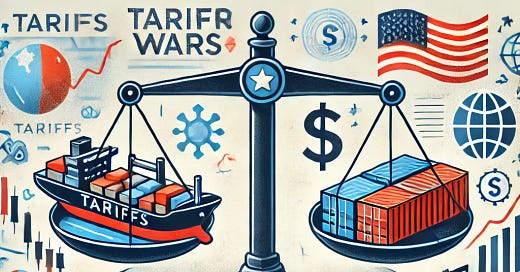Tariffs—essentially taxes on imported goods—have become a major talking point in recent years. From trade disputes with China to broader international trade challenges, the landscape of US tariff policy is complex and ever-changing. Let’s unpack the current situation, its economic impacts, and where things might be headed.
The Current US Tariff Situation
China
The US has placed tariffs on hundreds of billions of dollars worth of Chinese goods. These tariffs, introduced under Section 301 of the Trade Act of 1974, were a response to concerns about China’s trade practices, including intellectual property theft and unfair subsidies. Products affected range from electronics to clothing, impacting businesses and consumers alike.Other Countries
Tariffs aren’t limited to China. The US has also imposed tariffs on steel and aluminum imports from certain nations and introduced others in response to specific trade disputes.
Potential Changes on the Horizon
The future of US tariffs is uncertain, driven by political decisions and global economic trends. Here are three possible directions:
Tariff Reduction
Trade negotiations could lead to reductions or eliminations of some tariffs. This might lower prices for consumers and businesses but could also expose domestic industries to more competition.Tariff Increases
Conversely, tensions with key trade partners could lead to higher tariffs on certain goods or the addition of new tariffs. These changes could disrupt supply chains and raise costs.Targeted Tariffs
Policymakers might shift toward more specific tariffs, focusing on strategic industries or products subject to unfair trade practices.
Impact on the Economy
Tariffs have wide-reaching effects, both positive and negative:
Consumer Prices
Higher tariffs often mean higher prices for imported goods. This can directly impact consumer spending and contribute to inflation.Domestic Industries
Tariffs can protect domestic industries by making foreign products more expensive. However, they can also increase costs for businesses that rely on imported materials, potentially reducing competitiveness.Global Trade
Retaliatory measures from other countries in response to US tariffs can further disrupt global trade, complicating supply chains and creating uncertainty.
Additional Resources to Learn More
Office of the United States Trade Representative: https://ustr.gov/
World Trade Organization (WTO): https://www.wto.org/
The Balance: https://www.thebalance.com/
The Takeaway
Tariffs are a powerful tool in international trade, used to protect domestic industries and address unfair practices. But they come with significant trade-offs, including higher consumer prices and potential global trade disruptions. As the US navigates the complexities of its trade policies, businesses, investors, and consumers need to stay informed and adaptable.
The world of trade is dynamic—keep an eye on updates and shifts in tariff policy to understand how these changes might affect the economy and your wallet.





